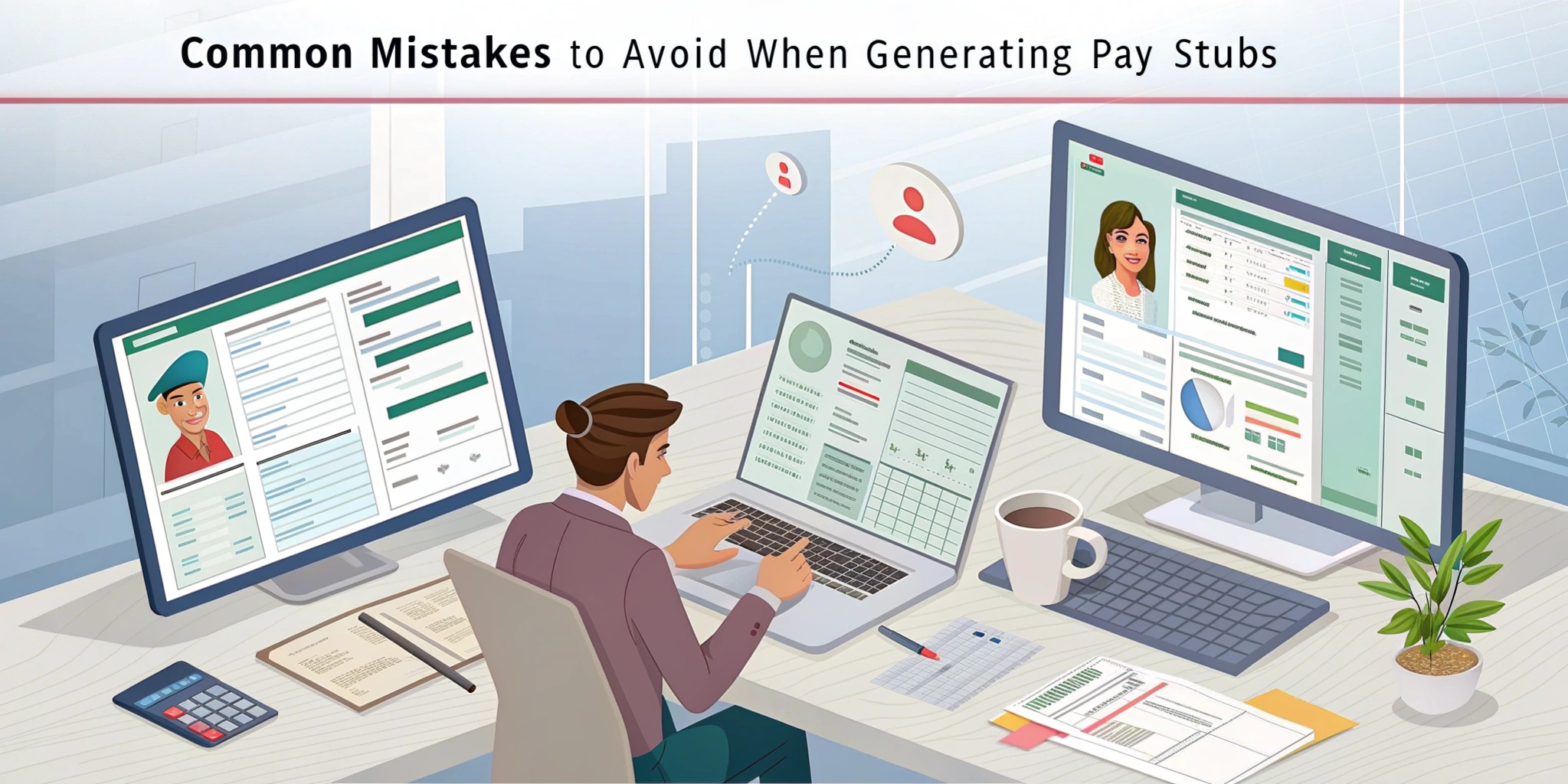
Common Mistakes to Avoid When Generating Pay Stubs Online
Generating pay stubs online has become increasingly popular for employers, freelancers, and self-employed individuals. With the help of modern pay stub generators, users can quickly create professional-looking documents for income verification, tax filings, or personal records. However, while these tools are convenient, mistakes in the pay stub creation process can lead to legal trouble, IRS scrutiny, or rejected applications.
To avoid such complications, here are the most common mistakes to avoid when generating pay stubs online, along with tips on how to get it right.
1. Using Inaccurate or Fake Information
One of the biggest and most serious mistakes is inputting false data, either intentionally or by accident. This includes:
● Inflated income figures
● Wrong employer name or business information
● Fake deductions or benefits
● Using a completely fabricated company
Why it matters:
Submitting inaccurate pay stubs for loans, rentals, or government benefits is considered fraud. Many institutions now verify pay stubs using employer databases or third-party verification services. Always use accurate, verifiable information.
2. Ignoring Proper Tax Deductions
Many users forget to include key tax deductions such as:
● Federal income tax
● State and local taxes (if applicable)
● Social Security and Medicare (FICA)
● Unemployment insurance or retirement contributions
Why it matters:
A pay stub that doesn’t reflect the correct withholdings and deductions looks unprofessional and may raise red flags. Use a calculator or a pay stub generator that includes automatic tax calculations based on your location.
3. Entering Incorrect Pay Periods
Some users enter overlapping or inconsistent pay periods (e.g., dates that don’t match the pay frequency like weekly, biweekly, or monthly). Others may forget to update the year-to-date (YTD) totals.
Why it matters:
Discrepancies in dates can make the pay stub look suspicious and affect bookkeeping, tax filings, or employment verification processes.
Tip: Double-check your pay frequency and make sure your pay period start and end dates align correctly.
4. Not Matching the Stub with Actual Bank Deposits
If you're submitting a pay stub for loan or rental applications, it should match your bank statements or direct deposit slips. Inconsistencies between what’s on paper and what’s in your account can be a red flag.
Why it matters:
Lenders and landlords often ask for bank statements alongside pay stubs. If the net pay doesn’t match the deposit, your application may be denied.
5. Choosing Unprofessional or Incomplete Templates
Not all online pay stub generators are created equal. Using a low-quality or unbranded template can result in a stub that lacks professionalism or necessary information such as:
● Employer and employee details
● Pay date and pay frequency
● Itemized deductions
● Company logo and contact info
Tip: Use a reputable and customizable pay stub generator that includes all legally required fields.
6. Overlooking Legal Disclaimers and Compliance
Some users generate pay stubs without considering state or federal labor laws. For example, in some states, it’s mandatory to include information about accrued paid leave or overtime calculations. Failing to follow regional labor laws could make your pay stub invalid in official processes or expose you to fines and penalties.